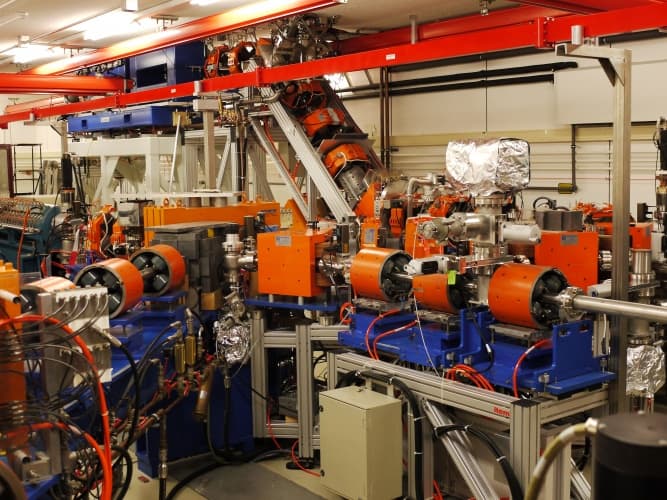
The scientists, part of a British-Dutch-Swiss team, used the phenomenon behind the infamous ’Schrödinger’s cat’ thought experiment to create an electronic switch that can turn on or off every millionth of a millionth of a second - one thousand times faster than previous silicon-based quantum switches.
Combining several of these quantum switches could produce building blocks for quantum processors, which could eventually enable the building of super-accurate clocks and ultra-sensitive biomedical sensors, according to the researchers from Imperial College London, University College London (UCL), Heriot-Watt University and the University of Surrey.
The new switch exploits a state of atoms known as quantum superposition, where an individual atom can exist in an excited state - with its electrons in higher-than-normal energetic orbits around the nucleus - and a non-excited state at the same time.
Most famously, quantum mechanics pioneer Erwin Schrödinger illustrated this phenomenon with the concept of a cat in a box that was alive and dead at the same time, with its state not decided until it was observed.
Using wafers of silicon doped with atoms of phosphorus — a standard material for electronic components — the team showed that they can flip the phosphorus atoms between states with a laser and observe these two states using conventional electrical measurements.
“This superposition of orbit states is very delicate, but we discovered that silicon provides an amazingly clean environment for the phosphorus atoms trapped inside where out quantum information is being observed,” explained Ellis Bowyer of Surrey University’s photonics laboratory.
”We put the atoms in a superposition statement with a very short (few trillionths of a second) laser pulse from the FELIX laser facility, and then we showed that we can create a new superposition which depends on the exact time a second laser pulse arrives.
”We found that the superposition state survives even when electrons are flying around the trapped atom while the current was flowing through the chip, and even more strangely, the current itself depends on the superposition state.” The team explains its results in the current issue of the journal Nature Communications.
The FELIX (Free Electron Laser Infrared eXperiments) laser is at Radboud University in Nijmegen, the Netherlands, and is capable of sub-picosecond pulses across a very wide range of frequencies.
The next step for the team is to connect several of these quantum switches together to make building blocks for quantum processors (in the same way that current microprocessors consist of many transistors — also essentially switches — connected together).
“What is exciting is that we can see these exotic quantum phenomena in the most common material, silicon, using a measurement as simple as the electrical resistance,” said UCL researcher Thornton Greenland. “Thus the time is drawing nearer when we’ll be able to make a computer that does a tremendous number of calculations simultaneously, and provides unprecedentedly secure computing.”




Project to investigate hybrid approach to titanium manufacturing
What is this a hybrid of? Superplastic forming tends to be performed slowly as otherwise the behaviour is the hot creep that typifies hot...